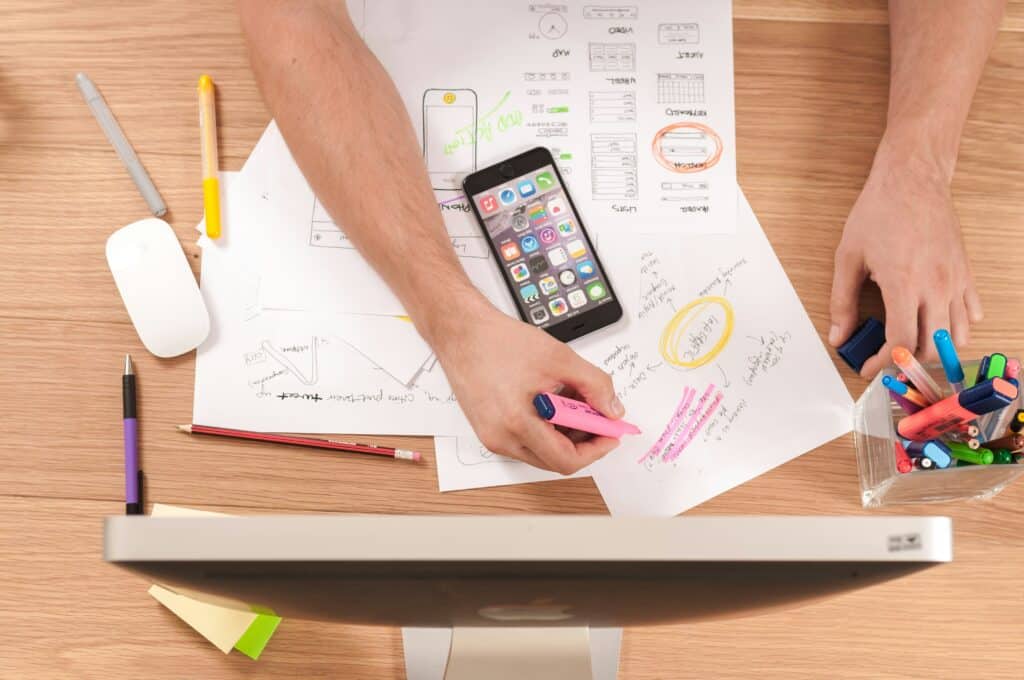The Power of Product Prototyping
In my journey through product design prototyping, I’ve discovered that the power held by prototyping is immense. It transforms ideas into tangible realities, bridging the gap between concept and creation. Here, I share why rapid prototyping has been a game-changer and how the technology has evolved.
Benefits of Rapid Prototyping
The benefits of rapid prototyping for product design are vast. This innovation enables the quick creation of prototype models using 3D computer-aided design (CAD). By allowing designers, engineers, and stakeholders to interact with a realistic model of the product, rapid prototyping offers numerous advantages.
- Swift Revisions: Rapid prototyping provides the flexibility to make swift revisions based on feedback and altering requirements. This adaptability is crucial in keeping up with the fast-paced changes in the marketplace.
- Accelerated Iterations: It speeds up the design iteration process by permitting designers to experiment with various ideas much faster than traditional methods (Pro-Dev).
- Efficient Innovation: By creating and testing multiple prototypes in a short span, teams can glean valuable insights, leading to informed decisions and quicker innovation. This helps companies stay ahead of their competitors.
- Enhanced Experimentation: Rapid prototyping fosters a culture of experimentation, encouraging teams to test new ideas and concepts quickly. This dynamic environment not only produces better products but also boosts employee morale and engagement (Savio).
Evolution of Prototyping Technology
The evolution of prototyping technology has been impressive. Originating in the late 1980s with the advent of 3D printing, it has revolutionized product development. This revolution has brought forward several key advancements:
| Era | Key Advancement | Impact |
|---|---|---|
| Late 1980s | Introduction of 3D Printing | Enabled quick iterations, flaw detection, and improved stakeholder communication. (Pro-Dev) |
| 1990s | Enhancement of CAD Software | Allowed for more detailed and complex designs. |
| 2000s | Rise of Digital Prototyping | Facilitated virtual testing and refinement before physical creation. |
These technological advancements have profoundly impacted the way products are conceptualized, designed, and brought to market. For those navigating the product design process, embracing these technologies can greatly enhance efficiency and innovation.
My journey through prototyping has shown me that utilizing the right product design tools and understanding the principles of product design are foundational to success. Embracing rapid prototyping not only accelerates the design process but also opens the door to endless creative possibilities.
Types of Prototyping
One of the most thrilling parts of my product design journey has been exploring the various types of prototyping. Each type has its own unique strengths and aids in different stages of the design process, allowing me to bring my ideas to life and refine them iteratively. Let’s dive into the essential prototyping methods that have transformed my approach to product design prototyping.
Paper Prototypes
Paper prototyping has been an exciting and low-cost way to brainstorm and visualize my ideas. By creating hand-drawn sketches of interface elements and organizing them on paper, I can simulate the structure and layout of a digital interface. This method allows for rapid iteration and early feedback gathering from stakeholders, making it ideal for exploring design concepts without heavy investment.
| Feature | Paper Prototypes |
|---|---|
| Cost | Low |
| Speed | Fast |
| Ideal For | Early concept exploration |
| Feedback | Early stakeholder input |
Digital Prototypes
Digital prototypes have taken my design game to the next level. These prototypes are created using software tools to simulate the user interface (UI). They allow for mid-fidelity visual designs and interactive elements which help in validating information architecture and user flow. Tools like 3D printing have also enabled me to iterate through physical prototypes quickly and cost-effectively.
| Feature | Digital Prototypes |
|---|---|
| Cost | Moderate |
| Speed | Moderate |
| Ideal For | UI/UX refinement |
| Feedback | Usability testing |
Interactive Prototypes
Interactive prototypes have been a game-changer by offering users the ability to click through a representation of the final product. This immersive experience allows them to navigate user flow and interact with features as they would in the live product. Interactive prototypes help me collect invaluable user feedback and test usability before moving to full development.
| Feature | Interactive Prototypes |
|---|---|
| Cost | High |
| Speed | Varies |
| Ideal For | Usability testing, user flow |
| Feedback | Detailed user interaction data |
Functional Prototypes
Lastly, functional prototypes have played a crucial role in validating the complete functionality of my designs. These prototypes encompass high-fidelity visual designs and interactive elements that mimic the behavior of the final product. Using functional prototypes helps me refine structure and workflows before heavy production investments, ensuring the product meets user needs effectively (AWA Digital).
| Feature | Functional Prototypes |
|---|---|
| Cost | High |
| Speed | Slow |
| Ideal For | Final validation |
| Feedback | Comprehensive user testing |
Through these various types of prototyping, I’ve been able to leverage invaluable user feedback and refine my designs iteratively. Whether it’s paper prototyping for quick iterations or interactive prototypes for extensive usability testing, prototyping has truly maximized my design efficiency and success.
Useful Internal Links:
Importance of User Testing
User testing has been pivotal in my journey to mastering product design prototyping. It not only identifies issues early but also enhances user experience significantly.
Early Issue Identification
Prototyping helps in early issue identification and resolution by allowing me to address usability flaws, technical glitches, or design inconsistencies at the prototype stages, saving time, resources, and potential headaches later in the development cycle (Dworkz). By creating prototypes and gathering feedback from stakeholders early on, I can spot design flaws or usability issues before significant resources are invested. This process ensures product quality and alignment with customer expectations.
Here’s how early issue identification works for me:
| Stage of Development | Cost of Fixing Issues |
|---|---|
| Prototyping | Low |
| Development | Medium |
| Post-Launch | High |
The table clearly shows that addressing issues in the prototyping stage is more cost-effective. This strategic approach prevents costly fixes down the line and helps in building a robust product from the get-go.
User Experience Enhancement
Using product design tools to create prototypes allows me to simulate user experiences without investing significant time and resources required for full production-ready development. It’s expensive to build fully functional products with robust code and pixel-perfect visuals. Prototyping reduces the upfront investment substantially, facilitating quick testing of concepts with users, and failing fast as needed (AWA Digital).
Prototypes enable me to uncover and address issues early in the design process when changes are relatively quick and inexpensive (AWA Digital). This keeps product development aligned with user needs and prevents potential problems from being integrated into the final product.
By incorporating user feedback into iterative design processes, I can enhance user satisfaction and the overall usability of the product. The insights gained from user testing inform me about what users truly need, allowing me to refine and define the product’s user experience more efficiently.
In summary, user testing through prototyping is crucial. It not only helps in identifying and resolving early-stage issues but also plays a vital role in enhancing the user experience, ensuring the final product meets user expectations. Combining principles of product design with user insights creates a seamless and user-friendly product.
Maximizing Design Efficiency
Using Prototypes for User Feedback
Embarking on the journey of product design prototyping has been a game-changer for me. A significant aspect that truly maximized my design efficiency was leveraging prototypes for user feedback. Prototypes are invaluable in helping me understand what users think of the product early in the design process. This approach aids in avoiding costly mistakes that might arise if issues are discovered too late in the production phase.
Benefits of User Testing with Prototypes:
- Identifying Purpose Early: Techniques like the five-second test, where users describe what they see after a brief look, reveal what users perceive as the product’s purpose.
- Reducing Costs: Prototypes enable me to simulate user experiences without the hefty cost of full production-ready development. This strategy saves significant time and resources, facilitating quick testing of concepts, failing fast, and making necessary iterations.
Prototyping has also allowed me to gather user feedback in real-time, leading to immediate and relevant design changes. This rapid iteration has been crucial in improving the usability and findability of the product, ensuring that the design aligns with user needs and expectations.
For more insights on the broader design process, visit our section on product design process.
Iterative Design Process
The iterative design process has been integral to my approach to product design. This method involves continuously refining and improving the product based on feedback and testing results. Rapid prototyping is at the heart of this process, enabling me to experiment with various ideas efficiently.
- Experimentation: For instance, I found that using 3D printing allowed me to create multiple prototypes overnight, which could then be tested for different shapes, sizes, and functionalities immediately.
- Quick Revisions: This approach helps in fixing usability issues, validating design directions, and integrating accessibility feedback effectively (AWA Digital).
| Iteration Benefits | Description |
|---|---|
| Usability Improvement | Fixing issues based on real user feedback. |
| Feature Identification | Discovering missing elements that users need. |
| Requirement Clarification | Ensuring development aligns with user needs. |
| Avoiding Wrong Investments | Changing direction before incurring significant costs. |
The shift from traditional focus groups to online remote user testing has also revolutionized how I gather feedback. Tools for remote testing provide a more robust and versatile set of features than ever before, making user testing more accessible and comprehensive.
By implementing this iterative design process, I ensure that each version of the product is better than the last, ultimately leading to a user-centered design. This technique not only boosts efficiency but also ensures that the final product meets the highest standards of quality and usability.
For more detailed strategies on making the most out of design tools, visit our section on product design tools. And don’t forget to explore the principles of product design for foundational insights on creating exceptional products.

